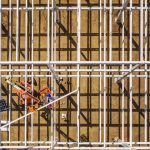Surety Bond Professionals is a family owned and operated bonding agency with over 30 years of experience. With access to a broad range of surety markets, our expert agents are ready to assist with all of your performance & payment bond needs.
Profit Fade Defined
Profit fade is what happens when profits on a construction project are gradually reduced over time as work on the project progresses. Surety companies typically require periodic financial reports throughout the duration of a construction project. These reports are prepared using the percentage of completion accounting method. Each report specifies the percentage of the project that has been completed to date and the profit recognized as of the date of the report.
Ideally, when a contractor reports that 50% of a project is complete, the profit recognized at that point and added to the contractor’s P&L statement is also 50% of the total estimated profit for the job, or $50,000. At the 75% completion mark, 75% of the profit should have been recognized, adding $75,000 to the P&L statement. Upon project completion, 100% of the estimated profit should be accounted for.
Profit Fade Example
Profit fade occurs when the profit recognized at a certain point in the life of the project is more than it should have been at that point based on the final profit figure at project completion. Consider a project with an estimated profit of $100,000. At each interim reporting point—at 25%, 50%, and 75% completion—the contractor recognizes $25,000, $50,000, and $75,000 in cumulative profit, respectively. But at the end of the project, when the work is 100% completed, the actual profit turned out to be only $85,000—a shortfall of $15,000.
That means that during the earlier accounting periods, the financial statements provided to the performance bond provider (and perhaps to lenders as well) were incorrect.
Causes of Profit Fade
There are a number of reasons why profit fade occurs. The most common causes of profit fade are:
- Overly optimistic profit estimates
- Incomplete or overly optimistic costs
- Underestimated rates for labor or equipment
- Change orders or rework that cannot be billed
- Poor performance by subcontractors and/or suppliers
- Inadequate site management
- Inadequate resources
- Poorly trained workers
- Bad weather
Profit fade is most common when integration of estimating, bidding, budgeting, and job costing is lacking, which makes it difficult to identify causes of variance.
How to Mitigate Profit Fade
There are things that contractors can do to help prevent profit fade. These best practices focus on tracking and communicating the financial status of projects and include:
- Using job-cost phase codes and task codes in budget and cost systems for better cost analysis
- Daily reporting of labor and equipment use
- Daily reporting of work completed
- Allocating costs (payroll tax, benefits, insurance, insurance, overhead, etc.) by job phase code
- For each piece of equipment, tracking use, ownership, and operating costs
- Using a purchase order system to track committed job costs
- Weekly reporting of labor costs by job and phase
- Monthly reporting of job profitability
- Regular periodic forecasting of construction costs at completion
- Requiring management approval of bids and forecasts
- Taking remedial actions when necessary to preserve profitability (e.g., by adjusting crew size, equipment use, and schedules)
- Including completed jobs in profit fade analyses of individual managers
- Making the reliability of profit fade estimates a regular topic of discussion with project managers
Preventing profit fade or correcting it when it is occurring requires internal transparency and proactive management of construction projects.
Performance Bonds, Payment Bonds & Profit Fade
Contractors cannot afford to lose credibility with the surety bond underwriters who determine whether they qualify for payment and performance bonds and the premium rates they will pay if approved. Underwriters aren’t particularly concerned about contractors showing an isolated instance of profit fade. But a pattern of overstating profits on multiple projects raises red flags, suggesting a breakdown between estimation and project management. If profit fade occurs regularly or is severe enough, underwriters may rethink their risk assessment.
The primary underwriting concern is the risk of a bond applicant incurring claims for nonpayment or nonperformance and not repaying the surety for credit extended to the contractor for the purpose of paying claims. The question is whether the contractor would have been approved for construction bonds in the first place or would have been assigned a higher premium rate if the profit estimation had been accurate. And that is a question every contractor wants to avoid.
Call Us Today
Our surety bond professionals will help you grow your revenue by maximizing your surety capacity. Call us today!





